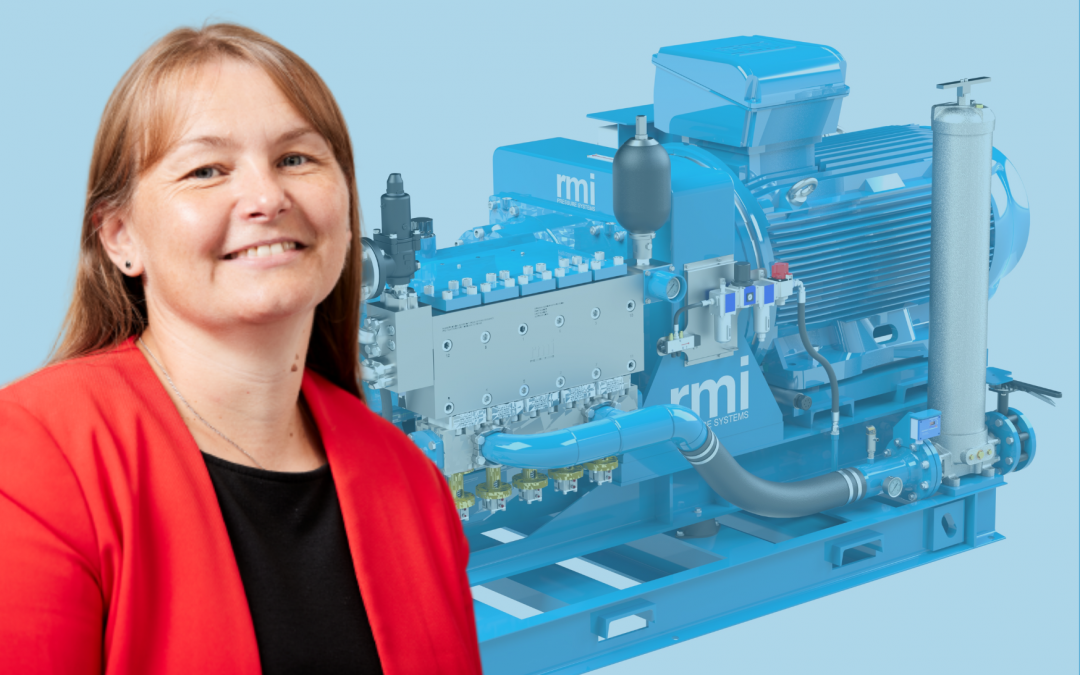High pressure pumps are often subjected to very demanding applications in mining, steel and many other industries – making their careful design and selection vital to safety, reliability and performance.
“In addition to exacting engineering standards and technical criteria, there is also the need for a stringent and often lengthy testing regime before equipment is dispatched and installed for customer use,” according to Kathryn Poke, RMI Pressure Systems’ general manager for Europe, the Middle East and Africa (EMEA).
As a global leader in high pressure reciprocating pumps, RMI Pressure Systems has a rigorous understanding of the critical functions essential to the reliability of these systems. Poke highlights some of the key ways to optimise pump design and selection.
Choose safety first
“Safety and reliability are critical factors to consider, including safety features such as a safety relief valve,” she says. “This valve protects against a ‘dead head’ situation in which the system demand for flow has stopped, causing the pressure to rise instantly.”
She says the safety valve should be designed to allow the entire pump capacity to flow, while the opening point should be set at 10% above the operating pressure. Also, the pipework associated with the safety relief valve should be properly sized to ensure adequate flow conditions.
“At RMI, we include a number of safety circuits to prevent a potential dead head condition,” she explains. “This includes a pump safety relief valve, and an unloading valve, or valve filters, which protect the pump against a potential hydraulic lock.”
Sensing and sealing
There are also oil temperature and pressure sensing circuits, as well as motor overload monitoring. These systems can indicate a potential issue with the system, allowing the pump to be stopped before any damage is caused.
“The sealing system of a pump is an equally important contributor to safety, and also enhances overall performance and reliability,” says Poke. “For high pressure reciprocating pumps like RMI manufactures, the task is typically performed by the stuffing box; this contains packing and lubricant in various configurations, depending on the application.”
As a service item, this packing should be able to be replaced without too much interference with the main pump assembly – so the pump design should accommodate this requirement.
Best use of energy
“Efficiency is also a priority for pump owners and operators, and reciprocating pumps offer important benefits in this regard as their design offers greater mechanical efficiency,” she says. “This intrinsic feature means that a smaller prime mover can be employed to drive the pump, which will mean the consumption of less energy.”
Not only will the careful selection and matching of the correct motor to the pumping system enable a more efficient combination, but it will also help achieve a lower total cost of ownership (TCO) for the customer.
“Variable speed technology effectively reduces energy consumption by allowing the pump to idle in a standby condition,” she says. “At the same time, it can still return to full service quickly and efficiently when required.”
This provides a valuable alternative to other options such as the complex by-pass, drain or accumulator systems; it allows the pump to run without generating further pressure, while also allowing system flow and pressure to be maintained as needed.
Trust in experience
“With over 100 years of experience in this field, at RMI we understand the demands of high pressure pumping applications and are proud of the reputation for reliability that we enjoy in global markets,” concludes Poke.
Getting the benefit
• Relief valves for safe operation
• Sensors to monitor for early warning signs
• Quality seals for performance and reliability
• Reciprocating pumps offer high efficiencies
• Variable speed technology cuts energy consumption

Recent Comments